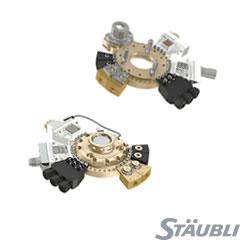Hexagon | AutonomouStuff Webinar Showcases How Velodyne’s Velarray H800 and PAEB Solution Can Power Advanced Driver Assistance Systems (ADAS) and Autonomy
“This webinar will discuss how automakers can significantly improve effectiveness and efficiency of vehicle driver-assist features and full autonomy by employing the Velarray H800. The sensor provides a revolutionary approach to making vehicles smarter and safer”
Velodyne Lidar, Inc. (Nasdaq: VLDR) today announced Dr. Mircea Gradu, the company's Senior Vice President of Product and Quality, is the featured speaker at a Hexagon | AutonomouStuff webinar on how lidar solutions can enhance safety in consumer vehicles.
"This webinar will discuss how automakers can significantly improve effectiveness and efficiency of vehicle driver-assist features and full autonomy by employing the Velarray H800. The sensor provides a revolutionary approach to making vehicles smarter and safer"
The free webinar, called "Automotive-grade solid-state lidar for ADAS and autonomy: Velodyne Velarray H800," takes place on December 15, 2020 at 2:00 p.m. EST. It is being moderated by Nicole Waier, Vice President, Worldwide Sales and Business Development, AutonomouStuff. To register, please click here.
The webinar will focus on the Velarray H800, Velodyne's newly launched solid state lidar sensor designed for safe navigation and collision avoidance in advanced driver assistance systems (ADAS) and autonomous mobility applications. The Velarray H800 can help automakers design ADAS solutions that help reduce traffic accidents as well as injuries and deaths of drivers, passengers, bicyclists and pedestrians. The Velarray H800 is a key technology that will be used in systems for powerful vehicle safety, including for Automatic Emergency Braking, Lane Keep Assist and Adaptive Cruise Control.
The webinar will also cover Velodyne's Pedestrian Automated Emergency Braking (PAEB) solution, which combines proprietary software, called Vella™, with Velodyne's lidar sensors. Recent pedestrian crash statistics highlight an opportunity for PAEB systems to save thousands of lives annually by improving performance in dark conditions. According to the National Highway Traffic Safety Association, in 2018, 76% of the 6,283 total pedestrian crash fatalities in the U.S. occurred in dark conditions. Adding lidar can help address the risks that current PAEB systems present in frequently failing to protect pedestrians in dark conditions.
To demonstrate how PAEB systems can be achieved by utilizing lidar, Velodyne tested its lidar-based PAEB system against a highly-rated PAEB system built around camera and radar. In these nighttime conditions, the camera and radar-based PAEB system failed in all five scenarios while the lidar-based system avoided a crash in every situation tested. The combination of Velarray lidar data and Vella processing software dramatically improves PAEB performance, addressing a use case that causes thousands of pedestrian fatalities annually, and strengthening the vehicle's functional safety achievements. For more information on the testing, please see Velodyne's recently issued white paper regarding PAEB here.
"Lidar is an essential building block in creating advanced driving systems that improve vehicle, passenger and pedestrian safety. Webinar attendees can hear from a leading industry authority on how the Velarray H800 lidar sensor can help make cars and roadways safer for everyone," said Waier, Vice President, Worldwide Sales and Business Development, AutonomouStuff.
"This webinar will discuss how automakers can significantly improve effectiveness and efficiency of vehicle driver-assist features and full autonomy by employing the Velarray H800. The sensor provides a revolutionary approach to making vehicles smarter and safer," said Gradu.
Gradu leads Velodyne's efforts to design, develop and manufacture world-class products compliant with international quality standards and is the 2018 President and Chairman of the Board of the Society of Automotive Engineers (SAE) International. He also is a Professor in the Mechanical and Aerospace Engineering Department at University of California Irvine (UCI), a member of UCI's Institute for Transportation Studies Leadership Council and a FISITA Council member (International Federation of the Automotive Engineering Societies).
The Velarray H800 boasts outstanding range, field of view and resolution to support advancements in ADAS and autonomy, from Level 2 to Level 5. The sensor's compact, embeddable form factor is designed to fit neatly behind the windshield of a truck, bus or car, or be mounted seamlessly on the vehicle exterior. It is architected for automotive grade performance and built using Velodyne's breakthrough proprietary micro-lidar array architecture (MLA).
About Velodyne Lidar
Velodyne Lidar (NASDAQ: VLDR) ushered in a new era of autonomous technology with the invention of real-time surround view lidar sensors. Velodyne is the first public pure-play lidar company and is known worldwide for its broad portfolio of breakthrough lidar technologies. Velodyne's revolutionary sensor and software solutions provide flexibility, quality and performance to meet the needs of a wide range of industries, including autonomous vehicles, advanced driver assistance systems (ADAS), robotics, unmanned aerial vehicles (UAV), smart cities and security. Through continuous innovation, Velodyne strives to transform lives and communities by advancing safer mobility for all. For more information, visit www.velodynelidar.com.
Featured Product

Stäubli robotic tool changer solutions
Stäubli is a pioneer in the construction and development of robotic tool changing systems. Our customers benefit from our many years of expertise in all industry sectors, as well as our modular product concept, which offers three efficient solution paths: MPS COMPLETE offers preconfigured robotic tool changers for immediate use. MPS MODULAR allows the user to determine the configuration, while MPS CUSTOMIZED allows the construction of special, application-specific systems.
